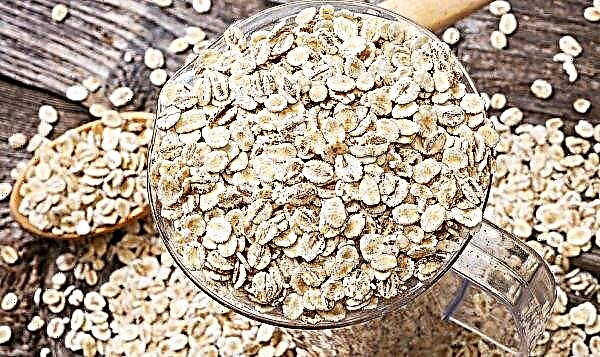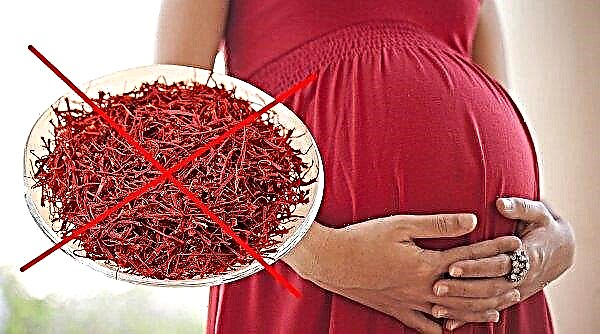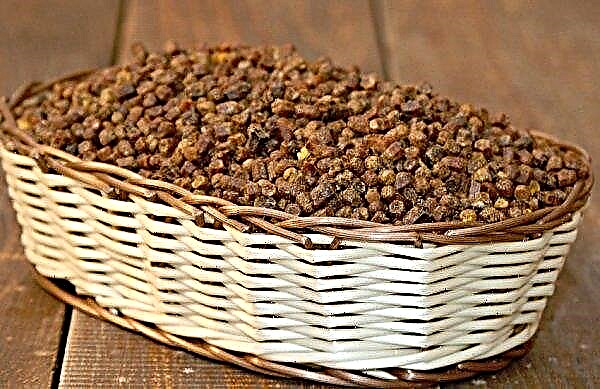Beekeeping today is a fairly developed sector of the economy in all countries. The most serious problem in breeding honey bees is invasive disease - varroatosis and acarapidosis. How to timely identify ailments and effectively deal with them with fir oil, read below.
What is varroatosis and acarapidosis
Varroatosis is a disease caused by ticks of varroa. Parasites settle on the bodies of bees, drones of uterus, drone brood, less often on bees. The body of the pest is small, flattened, painted brown.
Ticks feed on the hemolymph of the bee, making a puncture between the head and the chest, chest and abdomen, or between the first three segments of the abdomen. With a strong infection of the bee colonies on dead adult specimens, one can clearly see parasites with the naked eye.

Acarapidosis (acarosis) is an ailment caused by the tick of acarapis. Parasites settle in the bee's respiratory organs. By piercing the trachea during development, the tick feeds on hemolymph.
An asymptomatic infestation period can take up to 5 years. This is the greatest danger, since over a long period of time infection can occur not only within a dysfunctional economy, but also beyond its borders.

The secondary source of infection of the diseases under consideration is the affected families and swarms of bees separated from them. Parasites can enter the apiary when the bees and drones wander. Ailments can manifest themselves at any time of the year.
Important! Invasion by parasitic diseases is facilitated by the uncontrolled transportation of bees, the transfer of packages and queens from farms unsuccessful for the diseases under consideration. Before ordering bees from other regions, countries, you should make sure that there is documentation confirming the health of insects, and after receiving a family — create quarantine conditions.
Symptoms of infection and treatment
Every beekeeper should know how to determine the disease according to the symptomatic picture. This will help to start treatment on time and prevent massive pestilence. For the two ailments under consideration, the symptoms will be different.
 Varroatosis is easier to identify, since parasites live on the body of bees, and not inside, and the symptoms begin to manifest themselves quickly enough after infection.
Varroatosis is easier to identify, since parasites live on the body of bees, and not inside, and the symptoms begin to manifest themselves quickly enough after infection.
The main signs of invasive diseases:
| Varroatosis | Acarapidosis |
|
|
| individuals predominantly crawl on the ground with wings spread |
| in the summer, the symptoms are “smoothed out", since most infected individuals fly away and die outside the apiary; |
In order to diagnose diseases before the spring flyby, several living individuals, as well as death, are sent for laboratory analysis.
Did you know? A bee is able to lift and transport goods weighing 40 times its own.
With acarapidosis, fumigation is performed with Folbex (a single dose of 0.5 g) or with Ethersulfanate, 30% (0.3 g per treatment). The necessary dose is applied to a special strip of thick paper, then set fire to it, knock down the flame and leave smoldering in the hive.

If varroatosis is detected, all rotted families are completely destroyed. Weak swarms unite. They set up drifts, and brood with males are completely eliminated. Medical manipulations are carried out in spring and autumn, at a temperature not lower than + 15 ° C. The phenothiazine organic compound is used. Treatments are repeated every week. Throughout the month, spend 3 courses.
Important! If parasitic diseases are detected, quarantine is established in the area of 15 km. Throughout the entire period of treatment, it is imperative that all mortalities be disposed of by burning.
Benefits of Fir Oil Treatment
The use of fir oil is an adjuvant in basic therapy with chemical preparations and physical methods. Also natural "medicine" is effective in the initial stages of infection. Fir preparation is a natural raw material, therefore it does not cause side effects in the form of intoxication in bees.

- The main advantages of using natural oil:
- increased immunity in bees;
- lack of negative impact on the environment;
- stimulation of the development of young individuals;
- increase winter hardiness of bee colonies.
The therapeutic effect is due to the fact that all parts (needles, bark, wood, cones) of fir have in their composition a wide range of volatile, which have an anti-acaricidal effect, and also play the role of a natural antibiotic.
Did you know? A bee egg lays 1,000 eggs per day.
Application rules
Hives must be treated according to certain rules. Otherwise, all work will be in vain.
Work begins in the spring, before the first flyby, when the air temperature is set at + 15 ° C. Multiplicity of manipulations - 2 times with an interval of 8-10 days. In the autumn after the main trick, two similar manipulations are carried out with the same time intervals.

In the summer, from about the end of June, three treatments are performed at the same interval. The optimum air temperature is within +15 ... + 30 ° С. All work is carried out in the evening, after the bees return to the hives.
Step-by-step instruction
The use of fir oil refers to alternative methods of treatment. On veterinary information resources, accurate information about the processing is almost impossible to find. However, the tool has proven its effectiveness for a long time. It has been used in large farms since 1980, guided by the experience of old beekeepers.
Step-by-step instruction:
- Remove 1 or 2 aft frames, the remaining - push apart.
- Cut the drone brood.
- At the bottom of the hive place a sheet of thick paper soaked in petroleum jelly.
- On a sheet of parchment, apply fir oil at a rate of 1-2 ml per family. Place paper over top-facing frames. Cover with canvas. Cover letki for 2 hours.
- After the specified time, open the tap holes. Leave the parchment in the hive for another 72 hours.
- Every morning, change a sheet of paper from the bottom to a new one, not forgetting to apply petroleum jelly - mites will crumble onto it.
Video: Bee Fir Oil Processing
Bee Disease Prevention
To prevent a bee from contracting a disease or parasites, it needs proper care. Most ailments progress due to reduced immunity in insects. To avoid this, it is necessary to treat families with preventive compounds on time. For this purpose, fir oil can be used.
The main preventive measures to prevent varroatosis and other diseases of various nature:
- Hygiene of feeding bees.
- Conducting laboratory tests to identify ailments throughout the season.
- The location of apiaries far from polluted reservoirs, livestock farms.
- Timely rejection of cells. Thorough disinfection of equipment and beehives.
- Tracking the dynamics of the increase in bee colonies in order to prevent bee theft, wandering and swarming.
- Conducting preventive treatments using fir oil and antiviral drugs in spring and autumn.
- Qualitative preparation of bee colonies for wintering. If necessary, replace low-quality honey with sugar syrup.

Fir essential oil is undoubtedly an effective natural drug for the treatment and prevention of various diseases in bees. It combines perfectly with chemicals and makes it possible to significantly increase the resistance of insects to negative environmental factors.












